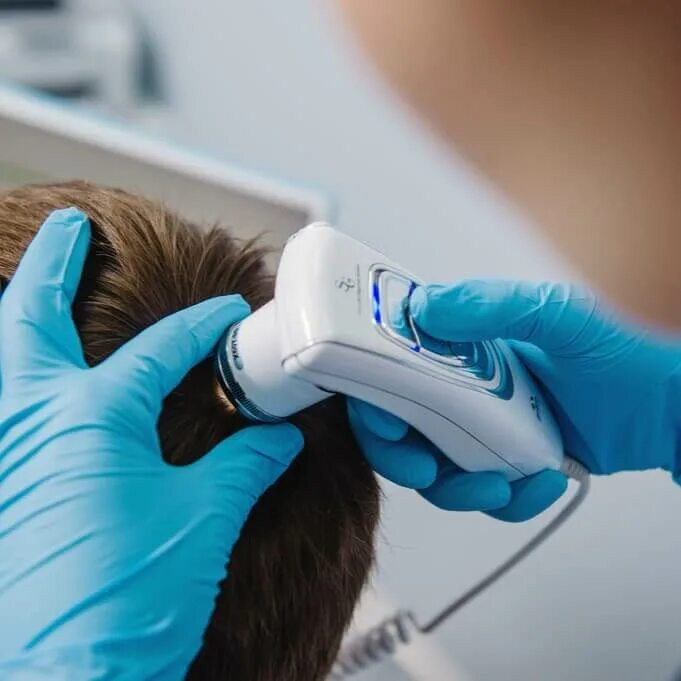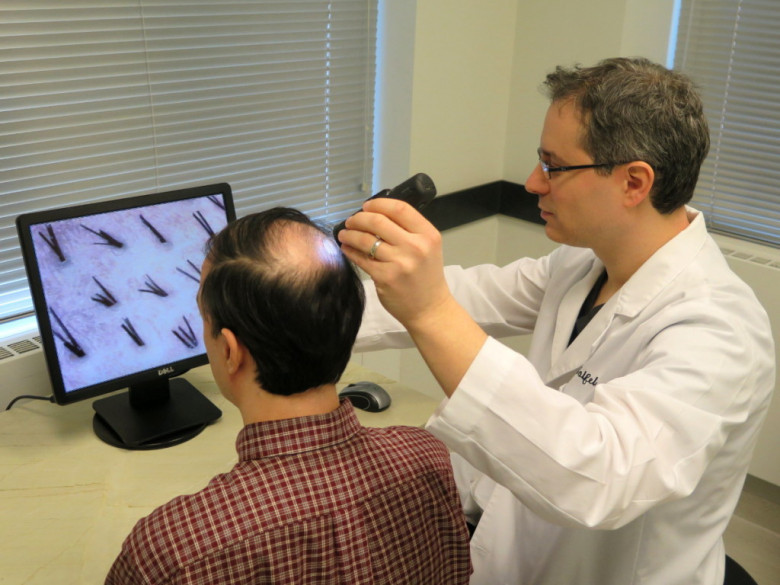views
As we age, many of us notice changes in our hair. For some, thinning hair and balding spots become a common concern. If you’re in your 30s, 40s, or even older, you might be wondering: Is it still possible to regrow hair after a certain age? The answer is yes—regrowing hair after a certain age is entirely possible, though the approach and methods may vary. Consulting with a Hair Specialist Doctor in Dubai can provide personalized advice, but there are several proven treatments and lifestyle changes that can help restore hair growth even later in life.

1. Understanding Hair Loss as You Age
Before diving into the ways you can regrow hair, it's important to understand why hair loss occurs, especially as we get older. Hair thinning and loss can be caused by various factors, including:
- Genetics: Androgenetic alopecia, or male and female pattern baldness, is the most common cause of hair loss, and it often becomes noticeable with age.
- Hormonal Changes: As we age, hormonal imbalances, particularly changes in thyroid function or menopause, can contribute to hair thinning.
- Lifestyle Factors: Stress, poor diet, smoking, and lack of sleep can all negatively impact hair health and lead to thinning.
- Health Conditions: Underlying medical conditions such as anemia, autoimmune diseases, or scalp infections may also contribute to hair loss.
By understanding the root cause, a Hair Specialist Doctor in Dubai can recommend the most effective treatments suited to your individual situation.
2. Medications: A First Line of Defense
One of the most common approaches to regrowing hair at any age is through medication. Two FDA-approved medications have shown promising results for both men and women dealing with hair loss:
-
Minoxidil (Rogaine): Minoxidil is a topical solution that can be applied directly to the scalp. It works by stimulating hair follicles, increasing blood flow, and encouraging regrowth. It's available over the counter and has been shown to slow hair loss and promote the growth of new, finer hair. Results can vary, but consistent use is key to seeing improvements.
-
Finasteride (Propecia): Finasteride is an oral prescription medication designed for men. It works by blocking the hormone dihydrotestosterone (DHT), which is responsible for the shrinking of hair follicles in male pattern baldness. For some men, finasteride can not only halt hair loss but also help regrow hair in thinning areas.
While these medications can help, it's important to note that results may take several months to become noticeable, and ongoing use is necessary to maintain the effects.
3. Platelet-Rich Plasma (PRP) Therapy: A Natural Approach
PRP therapy is an advanced treatment that uses your body’s own platelets to stimulate hair growth. During the procedure, blood is drawn from your body, processed to concentrate the platelets, and then re-injected into the scalp in areas of hair thinning or balding. The growth factors found in the platelets help rejuvenate the hair follicles and promote regrowth.
PRP is a great option for individuals of various ages and is particularly beneficial for those who may not respond well to medications. It’s minimally invasive with little to no downtime, making it a popular option for people looking for a natural, non-surgical solution to hair loss.
4. Hair Transplants: A Permanent Solution
For individuals with more advanced hair loss, hair transplants can be an effective and long-lasting solution. This surgical procedure involves taking healthy hair follicles from areas with strong growth (usually the back or sides of the head) and transplanting them to thinning or balding areas.
The transplanted hair follicles are resistant to the hormones that typically cause hair loss, meaning the results are permanent. Although this procedure requires a longer recovery period compared to non-surgical treatments, it offers a natural and permanent solution to hair loss, making it a top choice for those looking for dramatic and lasting results.
5. Healthy Lifestyle Habits: Supporting Hair Regrowth
While medical treatments are important, lifestyle changes also play a significant role in the health of your hair. Certain habits can either promote or hinder hair growth, so it’s essential to take care of your overall well-being.
-
Eat a Nutrient-Rich Diet: Hair needs the right nutrients to thrive. Include foods rich in biotin, iron, zinc, and vitamins A, C, and E to support hair health. Protein-rich foods like eggs, lean meats, and legumes are also essential for hair growth, as hair is primarily made up of protein.
-
Manage Stress: Chronic stress is a known contributor to hair loss, so finding ways to manage stress through relaxation techniques, exercise, or hobbies is important for maintaining healthy hair.
-
Avoid Harmful Hair Practices: Excessive heat styling, tight hairstyles, and harsh chemical treatments can weaken hair and cause breakage. Treat your hair gently by avoiding these practices whenever possible.
Adopting a healthy lifestyle not only benefits your overall health but also supports stronger, more resilient hair.
6. The Role of Scalp Care in Hair Regrowth
The health of your scalp plays a pivotal role in hair growth. If your scalp is clogged with dead skin cells, excess oil, or product buildup, it can hinder hair follicles from growing properly. Scalp massages, gentle exfoliation, and using suitable hair care products can help keep the scalp clean and healthy, which in turn supports hair regrowth.
Regular scalp massages, for instance, can stimulate blood flow to the hair follicles, which is crucial for nourishing the hair roots. Incorporating scalp care into your routine can amplify the effectiveness of other treatments.

7. Can You Regrow Hair After Age 50?
Many people wonder if it’s still possible to regrow hair after the age of 50, especially as hormonal changes take a stronger effect. While regrowing hair can be more challenging with age due to slower cell turnover and reduced circulation, it’s certainly still possible. Non-invasive treatments like PRP, along with medications like minoxidil, can help stimulate hair follicles and support regrowth at any age.
It's important to set realistic expectations when it comes to regrowth after a certain age. While full restoration may not always be achievable, many people see significant improvements in hair density and coverage after receiving the right treatment.
Conclusion: Regrow Hair at Any Age
In conclusion, regrowing hair after a certain age is possible with the right combination of treatments, healthy habits, and professional advice. Whether you're considering medications, PRP therapy, or a hair transplant, there are options available to help you restore your hair and confidence, no matter how old you are. Consulting with a Hair Specialist Doctor Dubai is an essential step in determining the most effective treatment plan for your unique needs. With the right approach, you can regain a fuller, healthier head of hair at any stage of life.






















Comments
0 comment